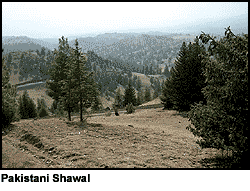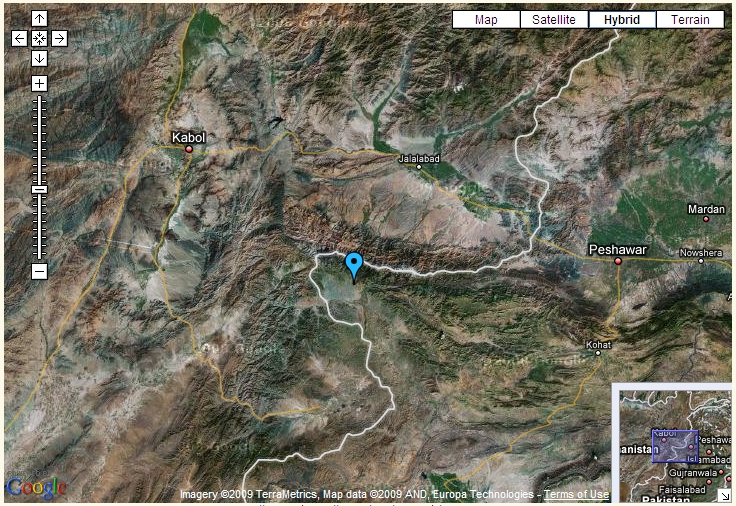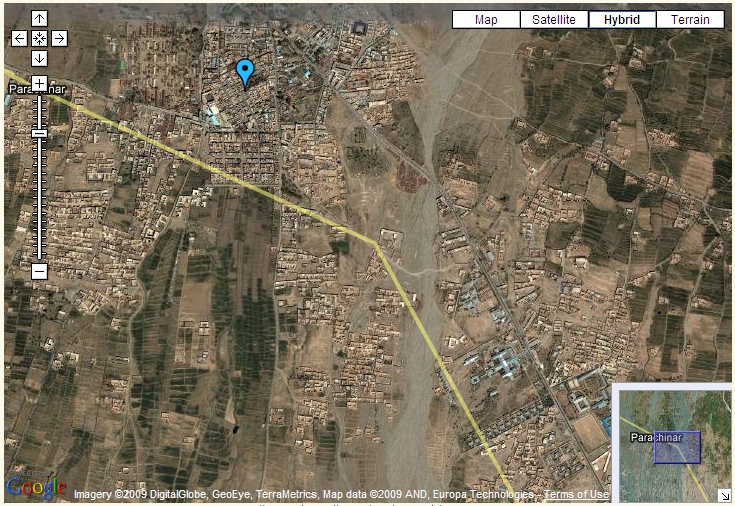Gates to Pakistan: Fight Our Common Enemies
BY Herschel SmithSecretary Gates is again pressing Pakistan to see the Taliban and al Qaeda (one presumes he means here both the Pak-Taliban and Afghan-Taliban) as our common enemy.
RAWALPINDI, PAKISTAN — Defense Secretary Robert M. Gates made an unannounced trip here Thursday to urge Pakistan to expand its crackdown against the Taliban as well as to counter skepticism about the Obama administration’s new war strategy for Afghanistan.
But there is an increasing symbiosis between the Pak-Taliban, the Afghan-Taliban and al Qaeda, and launching strikes against one is like strikes against them all. While Pakistan may see the Tehrik-i-Taliban as a potential enemy of the state, it still sees the Afghan-Taliban (the Quetta Shura) as its balance against India.
Myra MacDonald has an interesting article on “strategic depth” that warrants attention. She begins by citing a Pakistani commentator, and then discusses her own personal perspective given her history in the region. This is an extended read, but well worth the time.
Kamran Shafi has a column up at Dawn mocking Pakistan’s old strategy of seeking “strategic depth” – the idea that in the event of war with India its military would be able to operate from Afghanistan to offset its disadvantage as a small country compared to its much bigger neighbour:
“Let us presume that the Indians are foolish enough to get distracted from educating their people, some of whom go to some of the best centres of learning in the world. Let us assume that they are idiotic enough to opt for war instead of industrialising themselves and meeting their economic growth targets which are among the highest in the world. Let us imagine that they are cretinous enough to go to war with a nuclear-armed Pakistan and effectively put an immediate and complete end to their multi-million dollar tourism industry. Let us suppose that they lose all sense, all reason, and actually attack Pakistan and cut our country into half.
“Will our army pack its bags and escape into Afghanistan? How will it disengage itself from the fighting? What route will it use, through which mountain passes? Will the Peshawar Corps gun its tanks and troop carriers and trucks and towed artillery and head into the Khyber Pass, and on to Jalalabad? Will the Karachi and Quetta Corps do likewise through the Bolan and Khojak passes? And what happens to the Lahore and Sialkot and Multan and Gujranwala and Bahawalpur and other garrisons? What about the air force? Far more than anything else, what about the by now 180 million people of the country? What ‘strategic depth’ do our Rommels and Guderians talk about, please? What poppycock is this?
“More importantly, how can Afghanistan be our ‘strategic depth’ when most Afghans hate our guts, not only the northerners, but even those who call themselves Pakhtuns?”
Pakistan’s policy of seeking strategic depth in Afghanistan has been up for discussion since 9/11, when it was forced to abandon the Taliban regime it had backed to try to contain Indian influence there and give itself the space that it felt was so lacking on its eastern border. I have heard Pakistanis saying it was a stupid idea; others saying that even within the Pakistan Army there was a recognition that strategic depth nowadays was best achieved through building a strong domestic economy. Unlike 1971, when Pakistan was cut in two after Bangladesh, then East Pakistan, won independence with Indian military support, the notion that it might be split in half by an Indian offensive pretty much became outdated when both countries announced they had tested nuclear weapons in 1998.
So is Shafi tilting at windmills? Attacking an idea that belonged to the last century?
Not entirely. Strategic depth has become ingrained in the narrative of relations between India, Pakistan and Afghanistan — so taken for granted that I remember being rather surprised myself when a subeditor, quite rightly, asked me to explain what it meant. It may no longer apply in the pure military sense of providing a space to which the army can fall back and where reserves and supplies can be stored, but as a theoretical and emotional concept it lingers.
Notice the idea of Pakistan being forced to abandon their support for the Afghan-Taliban after 9/11. If we wish once again to force Pakistan to abandon their investment in the Taliban, half-way measures won’t do. The AfPak theater of operations must be seen as the focal point of the battle against the transnational Islamic insurgency, and we must resource the campaign with this in mind.
Did Secretary Gates’ admonition accomplish its mission? Not even nearly.
Pakistan’s army has said it will launch no new offensives on militants in 2010, as the US defence secretary arrived for talks on combating Taliban fighters.
Army spokesman Athar Abbas told the BBC the “overstretched” military had no plans for any fresh anti-militant operations over the next 12 months.
Our correspondent says the comments are a clear snub to Washington.
But it gets worse. Pakistan is even worried that the buildup of U.S. troops in Afghanistan will send fleeing Taliban across the so-called border into their territory. This is a fairly rudimentary issue to be so far and so many years into the campaign – this notion that the intent is for the Pakistanis to press the Taliban from their side while we press them from the Afghan side.
This all points to a Pakistan that still doesn’t see the Taliban as an existential threat, a Pakistan that can still use the Taliban as a balance to Indian power (however quaint the notion), and a Pakistan that simply wants to see it all go away – and believes that a cessation in military operations will accomplish this.
Asking the question whether al Qaeda and the Taliban are in Pakistan or Afghanistan is like asking whether the water is on the right or the left side of a swimming pool.
The conversation on Pakistan versus Afghanistan presupposes that the Durand Line means anything, and that the Taliban and al Qaeda respect an imaginary boundary cut through the middle of the Hindu Kush. It doesn’t and they don’t. If our engagement of Pakistan is to mean anything, we must understand that they are taking their cue from us, and that our campaign is pressing the radicals from the Afghanistan side while their campaign is pressing them from the Pakistani side.
Advocating disengagement from Afghanistan is tantamount to suggesting that one front against the enemy would be better than two, and that one nation involved in the struggle would be better than two (assuming that Pakistan would keep up the fight in our total absence, an assumption for which I see no basis). It’s tantamount to suggesting that it’s better to give the Taliban and al Qaeda safe haven in Afghanistan as Pakistan presses them from their side, or that it’s better to give them safe haven in Pakistan while we press them from our side. Both suggestions are preposterous.






